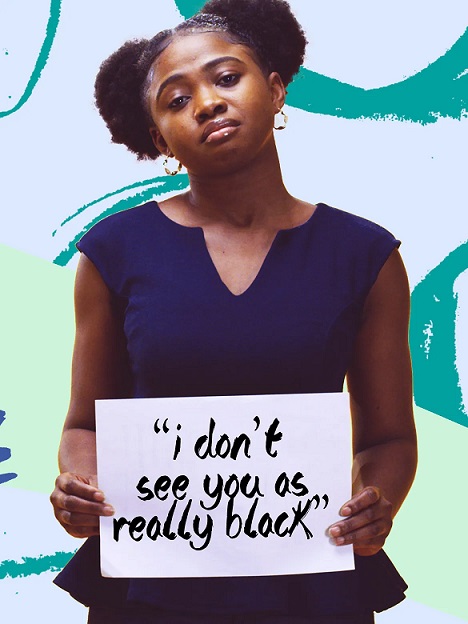by The Bronfenbrenner Center for Translational Research
A new systematic review categorizes microaggressions and their consequences.
KEY POINTS
- A review organizes microaggressions into categories such as “pathologizing differences” and “denigrating and pigeonholing.”
- Daily experiences of racial microaggressions are linked to lower psychological and physical well-being.
- Strategies to cope with microaggressions include community support, resistance coping, and self-protective coping.
An Asian female board member speaks up in a meeting about an important issue, only to be interrupted by her white male colleagues. A security guard follows a Black man around a store at the mall to make sure he doesn’t steal anything. A teacher compliments a Latino student on her English, even though she was raised in the U.S. with English as her first language.
These slights have a formal name: microaggressions — indirect, subtle, or unintentional discriminatory acts against members of a marginalized group. A growing body of literature demonstrates that microaggressions are harmful to minority groups and reinforce damaging stereotypes. In fact, the latest issue of Perspectives on Psychological Science is completely focused on the topic of microaggressions.
Included in the issue is a systematic review of 138 studies that documents and categorizes microaggressions, describes their harmful effects, and identifies coping strategies.
The authors define four categories of microaggressions. First, pathologizing differences are attempts — either conscious or unconscious — to criticize a minority group’s cultural styles, values, or practices. Often referred to as microinsults, they serve to reinforce white superiority. For example, in one study, white people assumed that black people in a workplace were delivering goods and sent them through the service door of the office building, even though these individuals held leadership roles in their workplaces.
A second category — denigrating and pigeonholing — involves circumstances when white people use their power to undermine, confine, or exaggerate a target’s mental capacity, behavior, or appearance. This tends to happen through normal conversation. For example, in one study, white participants assumed Asian participants were experts in science and math, but not in English literature. In another study, participants asked indigenous Canadians if they still lived in teepees.
The third category — excluding and rendering invisible — occurs when white people send the message “you don’t belong” or “I don’t see you” to minorities. Examples include a white person asking a person of color where they were born. Or they imply that all people with a particular skin tone hold the same culture and values. Another example is when Black shoppers are ignored by store clerks.

Color Blind?
The fourth type — perpetuating color-blind racial attitudes — occurs when white people deny, distort, or minimize race and racism in their interactions with people of color. Examples: When white people deny the history of racial trauma for Black and indigenous people. Or they accuse minorities of being overly sensitive about issues surrounding race.
The review found clear evidence that daily experiences of racial microaggressions harm the psychological and physical well-being of minorities. Data indicate that racial microaggressions are linked to low self-esteem, increased stress levels, anxiety, depression, and suicidal thoughts. People of color who experience microaggressions are more likely to feel sadness, anger, and hopelessness. Other studies have found that people who experience microaggressions are more likely to report stomachaches, headaches, sleep disturbances, and high blood pressure. Other research has demonstrated people who experience regular microaggressions are more likely to use alcohol and tobacco.
3 Strategies to Cope with Microaggressions
The review authors also summarize the research on coping mechanisms for people who experience microaggressions and identify three common strategies.
Collective coping involves looking for connection and support from family and friends, and community and professional networks. This could be anything from joking about microaggressions with loved ones. It might be joining a formal mentoring program or living in cultural housing at a university. This strategy often involves microaffirmations — essentially the opposite of microaggressions — where people of color consciously affirm each other’s value, integrity, and shared humanity.
A second coping strategy is referred to as resistance coping. This involves combating microaggressions by resisting Eurocentric norms, defying stereotypes, and confronting perpetrators directly. Strategies run the gamut. This could involve straying from stereotypes of appearance, such as when black women leave their hair natural. Other examples include working extra hours or extra hard to combat the stereotype of laziness or directly confronting the individual who engages in microaggression.
A third coping strategy is called self-protective coping; it involves using self-care to protect against microaggressions. Research offers a wide range of examples including choosing to adopt a positive outlook, picking your battles, and setting boundaries. In one study, a Black participant explained he read biographies of prominent African Americans who overcame adversity to remind himself that he too can also overcome stereotypes and insults. In another study, Black men purposely avoided racially charged topics in workplace discussions.
The take-home message: Microaggression is a serious problem for minorities. Evidence shows they lead to both psychological and physical harm, but there are effective coping strategies that potentially mitigate their negative consequences.

